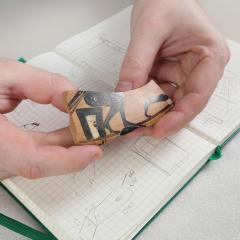Tombstones and other memorials to the dead bring life to some of the more interesting residents of ancient Greece and Rome at an exhibition opening in Brisbane this week.
The University of Queensland’s RD Milns Antiquities Museum’s latest exhibition, A Study in Stone: The History of Epigraphy, tells the story of characters such as imperial freedman Tiberius Claudius Amianthus, and Theophile, a woman who ‘possessed every virtue’.
Museum Director Dr Janette McWilliam said the exhibition featured artefacts from five Australian collections, including the Australian National University Classics Museum and the University of Sydney’s Nicholson Museum.
“One of the few ways to explore the lives of ancient people below the upper classes is to study their memorials and funerary practices,” Dr McWilliam said.
“This exhibition highlights the important role that epigraphy – the study of Greek and Roman inscriptions – particularly memorial inscriptions, plays in helping us to understand the lives of people who lived in ancient Greece and Rome.”
The exhibition includes 12 ancient burial inscriptions and a dozen rare books from UQ’s Fryer Library.
A Study in Stone: The History of Epigraphy opens at 6pm Friday, followed by a lecture by the RD Milns Visiting Scholar, Professor John Bodel, the W. Duncan MacMillan II Professor of Classics and Professor of History at Brown University at 10am, Saturday 7 June 2014.
The free exhibition will continue into 2015 at the RD Milns Antiquities Museum, Level 2, Building 9 (Michie) at UQ’s St Lucia campus.
This article was first published by UQ News. View original article here.


